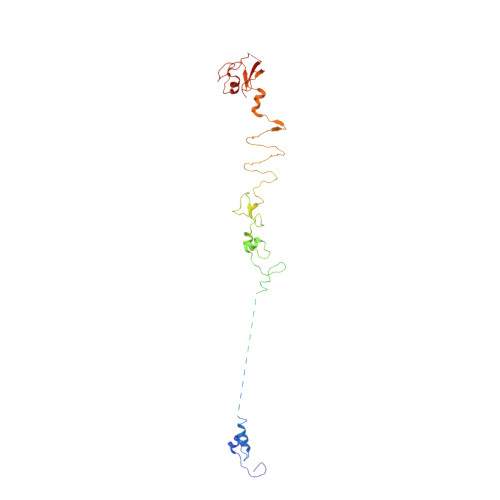Contractile injection systems of bacteriophages and related systems.
Taylor, N.M.I., van Raaij, M.J., Leiman, P.G.(2018) Mol Microbiol 108: 6-15
- PubMed: 29405518
- DOI: https://doi.org/10.1111/mmi.13921
- Primary Citation of Related Structures:
5LYE - PubMed Abstract:
Contractile tail bacteriophages, or myobacteriophages, use a sophisticated biomolecular structure to inject their genome into the bacterial host cell. This structure consists of a contractile sheath enveloping a rigid tube that is sharpened by a spike-shaped protein complex at its tip. The spike complex forms the centerpiece of a baseplate complex that terminates the sheath and the tube. The baseplate anchors the tail to the target cell membrane with the help of fibrous proteins emanating from it and triggers contraction of the sheath. The contracting sheath drives the tube with its spiky tip through the target cell membrane. Subsequently, the bacteriophage genome is injected through the tube. The structural transformation of the bacteriophage T4 baseplate upon binding to the host cell has been recently described in near-atomic detail. In this review we discuss structural elements and features of this mechanism that are likely to be conserved in all contractile injection systems (systems evolutionary and structurally related to contractile bacteriophage tails). These include the type VI secretion system (T6SS), which is used by bacteria to transfer effectors into other bacteria and into eukaryotic cells, and tailocins, a large family of contractile bacteriophage tail-like compounds that includes the P. aeruginosa R-type pyocins.
Organizational Affiliation:
Structural Biology of Molecular Machines Group, Protein Structure & Function Programme, Novo Nordisk Foundation Center for Protein Research, Faculty of Health and Medical Sciences, University of Copenhagen, Blegdamsvej 3B, Copenhagen 2200, Denmark.
















